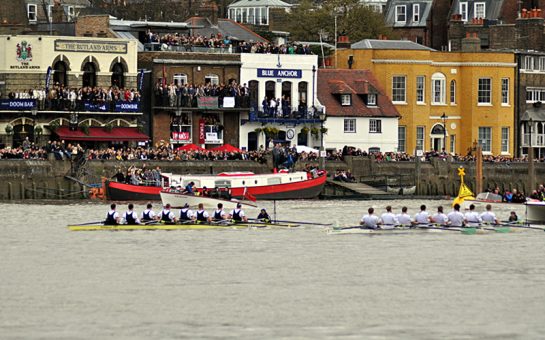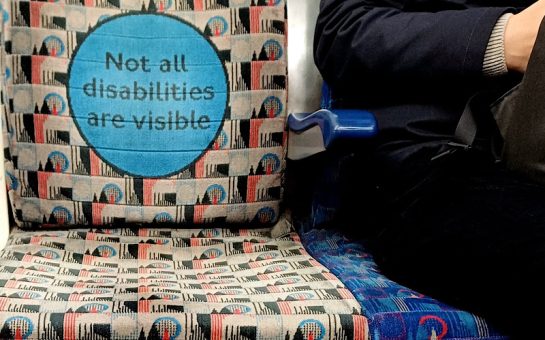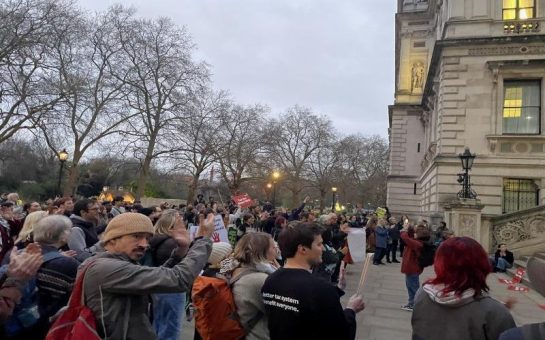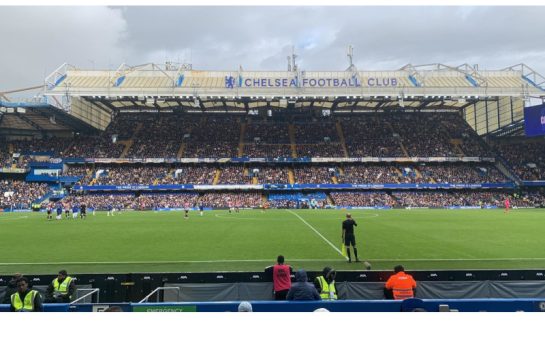The Ultra Low Emission Zone (ULEZ) is expanding today. Find out below how this will affect you and your travel around London, whether your vehicle is exempt and how much it could cost you if not.
Since April 2019 the ULEZ has covered the same area of Central London as the Congestion Charge, which was introduced in 2003.
Today it will expand dramatically, covering 18 times more of London than it did previously.
This charge will apply to older, more polluting cars and apply at all times except Christmas day.
What is ULEZ?
ULEZ has been expanded to improve air quality in London, and is estimated to affect roughly 140,000 vehicles daily.
This expansion is a move by Mayor of London Sadiq Khan in an effort to reduce toxic air pollution, which has been reduced by roughly a third within the zone since it started two years ago.
According to Transport for London (TfL), four out of five cars within the zone already meet the ULEZ emissions standards.
But owners of non-compliant vehicles will either have to find alternative means of travel, or pay a daily charge to travel within the zone.
Where does the ULEZ cover?
The expanded ULEZ covers a single, larger zone that is up to but not including the North Circular Road (A406) and South Circular Road (A205).
This cuts across areas in Wandsworth, Lambeth and Richmond and also includes all of Hammersmith and Fulham, and Kensington and Chelsea.
For a more detailed map of exactly where the ULEZ covers, see here. There is also a postcode checker available here.
How much will it cost?
Cars that do not meet the ULEZ emissions standards must pay a daily charge to drive inside the zone.
For most vehicle types, including cars, motorcycles and smaller vans, the charge is £12.50 per day.
Drivers can pay the charge by midnight on the third day following their journey, or up to 90 days in advance.
If you do not pay on time, you risk a Penalty Charge Notice (PCN) of £160, which can be halved if paid within two weeks.
Drivers can also set up an Auto Pay, which bills users automatically when they enter the ULEZ, so you don’t have to worry about receiving PCNs or forgetting to pay.
Auto Pay has an annual registration fee of £10 per vehicle and also covers travel with the Congestion Charge area.
Is your car exempt?
The majority of vehicles in London will not be affected by the ULEZ expansion.
Most petrol cars registered from 2005 onwards are generally exempt, as are most diesel cars registered after September 2015.
If you are unsure, you can check your vehicle here.
How does it work?
Green ULEZ road signs have been popping up around London marking out when drivers are entering the zone.
There are no barriers or toll booths, but there will be cameras stationed around London that will read and register number plates as you drive through the zone.
There are also advanced information signs on major roads warning of ULEZ entry half a mile from the boundary.
What are the other exemptions?
For those who own a vehicle registered with a ‘disabled’ or ‘disabled passenger’ vehicles’ tax class, there is a grace period on charges until October 2025.
However, Blue Badge holders will need to pay the charge unless their vehicle meets the ULEZ emission standards or falls under the above tax class.
There are also exemptions for taxis, and some not-for-profit organisations can register minibuses for a two year grace period.
These organisations include charities, non-private schools, local authorities and other not-for-profit organisations.
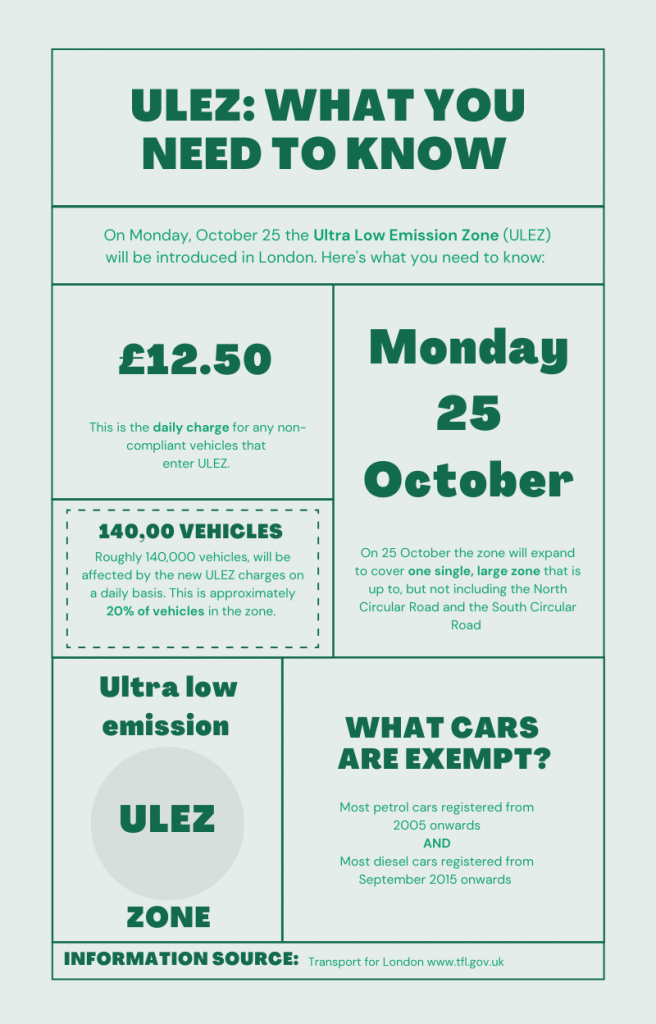
For residents in South West London without an ULEZ-compliant car, these new restrictions could mean having to pay £12.50 to go to your local supermarket or take your children to school.
In Richmond, the boundary cuts across the borough.
For Richmond Councillor Gareth Roberts, there is one road in particular that now falls inside the boundary which causes a problem.
Mortlake Crematorium and the Household Re-use and Recycling Centre both fall on Townmead Road.
Despite speaking to the Deputy Mayor of London for Transport Heidi Alexander about the impact the boundary will have on the borough, and making a specific request to be made around this one road, no exemptions were made.
He said: “It’s a good thing that the mayor is willing to take bold steps to clean up the air.
“However, this is a very blunt tool, and doesn’t necessarily take into account everybody’s personal circumstances.
“There was a marked reluctance to even consider the sanctity of the boundary.
“They felt that it was easier to have a one size fits all approach, even though it will be detrimental to residents here and possibly lead to an increase in fly tipping, rather than taking, in my view, the sensible approach.
“And it’s effectively asking mourners who don’t have a compliant car to pay £12.50 to attend a service.
“The answer has always been the same: the boundary is the boundary and that’s the policy.
“There has been cross party support for ULEZ, and in principle it is not questioned; it’s just merely the manner in which it has been introduced.
“It does lead to disparities and does nothing to address some of the really polluted areas of the borough which have got the highest figures, but because they fall outside of ULEZ nothing is done to address that.”
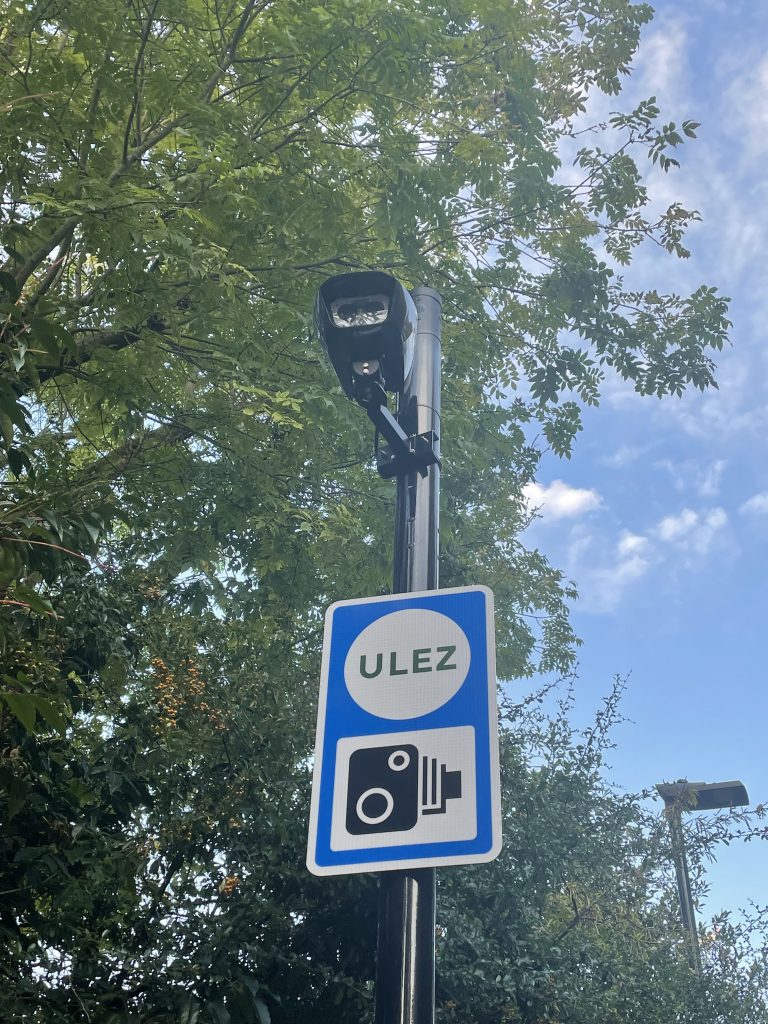
Barnes Common resident Colm Nugent recently replaced his family’s two cars with second-hand ULEZ-compliant versions.
He said: “I can see the argument which says that buying a new car is much more environmentally damaging than keeping your car, which is undoubtedly true.
“The most environmentally conscious car you can have is the one you already own.
“But that doesn’t really address the issue of air pollution.
“The reality is that air pollution in Central London is terrible, and something has to be done to address it.
“There are a limited number of things the Mayor can do, and this is one of them.
“Every change that has been made in respect of limiting access so that cars and people come into contact less often, every single change from the very beginning has been resisted.
“Just think of how incredibly controversial the London Congestion Charge was.
“Is there a single political party or council in Central London advocating for its removal? Not one.
“ULEZ is simply one step in the direction of travel, with the ultimate destination being to improve air quality in London.”
